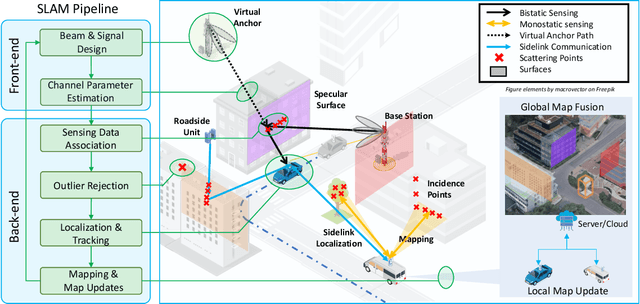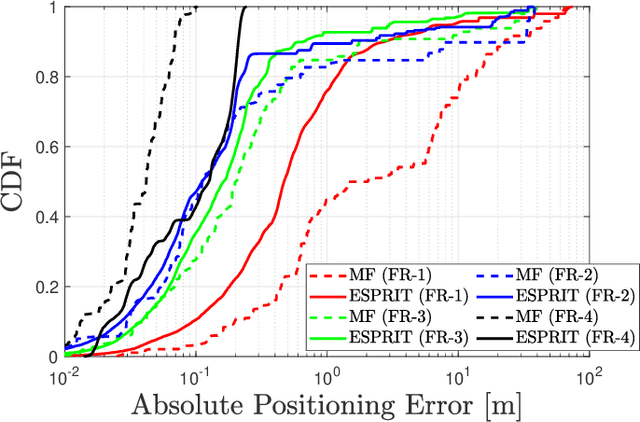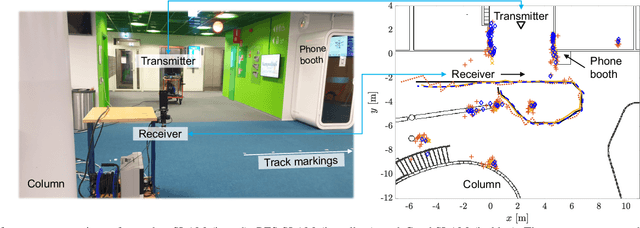Guillaume Jornod
Sensing with Mobile Devices through Radio SLAM: Models, Methods, Opportunities, and Challenges
Sep 09, 2025



Abstract:The integration of sensing and communication (ISAC) is a cornerstone of 6G, enabling simultaneous environmental awareness and communication. This paper explores radio SLAM (simultaneous localization and mapping) as a key ISAC approach, using radio signals for mapping and localization. We analyze radio SLAM across different frequency bands, discussing trade-offs in coverage, resolution, and hardware requirements. We also highlight opportunities for integration with sensing, positioning, and cooperative networks. The findings pave the way for standardized solutions in 6G applications such as autonomous systems and industrial robotics.
Distributed Intelligent Sensing and Communications for 6G: Architecture and Use Cases
Apr 17, 2025



Abstract:The Distributed Intelligent Sensing and Communication (DISAC) framework redefines Integrated Sensing and Communication (ISAC) for 6G by leveraging distributed architectures to enhance scalability, adaptability, and resource efficiency. This paper presents key architectural enablers, including advanced data representation, seamless target handover, support for heterogeneous devices, and semantic integration. Two use cases illustrate the transformative potential of DISAC: smart factory shop floors and Vulnerable Road User (VRU) protection at smart intersections. These scenarios demonstrate significant improvements in precision, safety, and operational efficiency compared to traditional ISAC systems. The preliminary DISAC architecture incorporates intelligent data processing, distributed coordination, and emerging technologies such as Reconfigurable Intelligent Surfaces (RIS) to meet 6G's stringent requirements. By addressing critical challenges in sensing accuracy, latency, and real-time decision-making, DISAC positions itself as a cornerstone for next-generation wireless networks, advancing innovation in dynamic and complex environments.
V2X Sidelink Positioning in FR1: From Ray-Tracing and Channel Estimation to Bayesian Tracking
Jun 25, 2024Abstract:Sidelink positioning research predominantly focuses on the snapshot positioning problem, often within the mmWave band. Only a limited number of studies have delved into vehicle-to-anything (V2X) tracking within sub-6 GHz bands. In this paper, we investigate the V2X sidelink tracking challenges over sub-6 GHz frequencies. We propose a Kalman-filter-based tracking approach that leverages the estimated error covariance lower bounds (EECLBs) as measurement covariance, alongside a gating method to augment tracking performance. Through simulations employing ray-tracing data and super-resolution channel parameter estimation, we validate the feasibility of sidelink tracking using our proposed tracking filter with two novel EECLBs. Additionally, we demonstrate the efficacy of the gating method in identifying line-of-sight paths and enhancing tracking performance.
 Add to Chrome
Add to Chrome Add to Firefox
Add to Firefox Add to Edge
Add to Edge